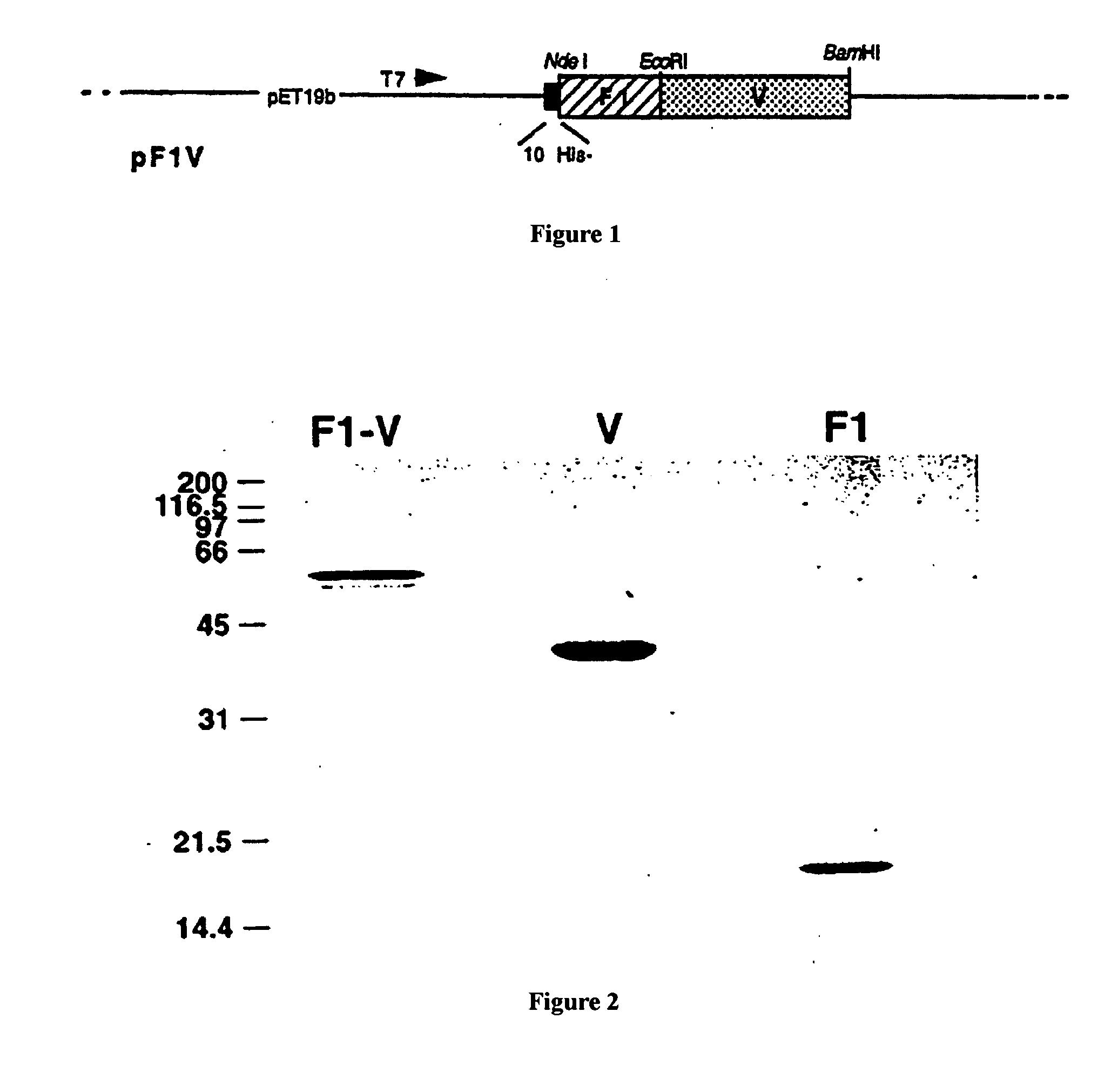Recombinant F1-V Plague Vaccine
a technology of recombinant f1v and plague vaccine, which is applied in the direction of antibacterial agents, immunological disorders, antibody medical ingredients, etc., can solve the problems of high mortality rate, vaccine does not provide complete immunity, and inadequate immunity
- Summary
- Abstract
- Description
- Claims
- Application Information
AI Technical Summary
Benefits of technology
Problems solved by technology
Method used
Image
Examples
example 2
[0065]Animal immunization and challenge with Y. pestis. Groups of female 8-10 week old Swiss Webster (Hsd:ND4) mice (Harlan Sprague Dawley, Indianapolis, Ind.) were immunized subcutaneously on days 0 and 28 with 0.2 ml of the F1-V, F1, or V antigen preparation adsorbed to the aluminum hydroxide adjuvant, Alhydrogel (1.3%, Superfos Biosector, Vedbaek, Denmark, 0.19 mg aluminum per dose), the human whole-cell plague vaccine U.S. Pharmacopeia (USP) (Greer Laboratories, Lenoir, N.C.) or Alhydrogel alone as a control. Serum obtained on day 58 after initial immunization was assayed for anti-F1 and anti-V IgG antibody by standard ELISA on individual animals and group geometric mean titers determined. Titers were determined as the reciprocal of the maximum dilution giving an absorbance greater than 0.1 units after subtraction of nonspecific binding in normal serum.
[0066]The immunized animals were then challenged on day 78 by either the subcutaneous or aerosol route with wild-type F1+ Y. pes...
PUM
| Property | Measurement | Unit |
|---|---|---|
| molecular mass | aaaaa | aaaaa |
| swelling | aaaaa | aaaaa |
| resistance | aaaaa | aaaaa |
Abstract
Description
Claims
Application Information
 Login to View More
Login to View More - R&D
- Intellectual Property
- Life Sciences
- Materials
- Tech Scout
- Unparalleled Data Quality
- Higher Quality Content
- 60% Fewer Hallucinations
Browse by: Latest US Patents, China's latest patents, Technical Efficacy Thesaurus, Application Domain, Technology Topic, Popular Technical Reports.
© 2025 PatSnap. All rights reserved.Legal|Privacy policy|Modern Slavery Act Transparency Statement|Sitemap|About US| Contact US: help@patsnap.com


